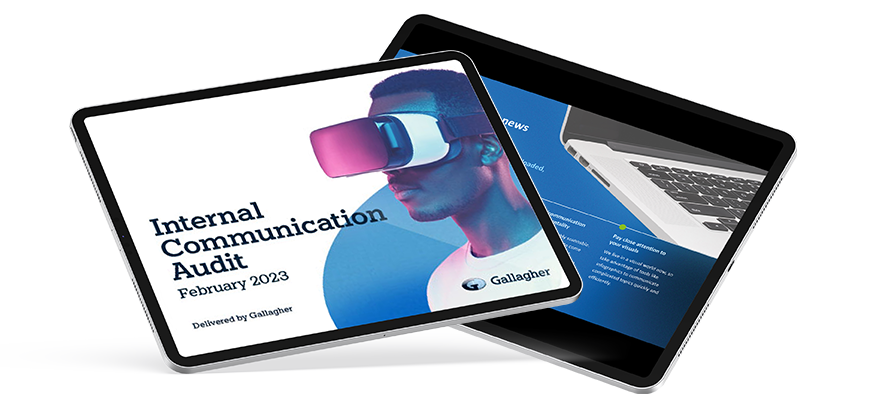
Now’s the time to re-evaluate how we ‘do’ internal communication in the decade to come
Senior Principal Consultant
Internal Communication

Before you get started, it’s important to understand why you want to undertake an internal communication audit. And I know I’m stating the obvious, but this about equipping yourself to take a more strategic approach to your communications, making sure you’re meeting the needs of employees, and giving them the information that they need to do their jobs to the best of their ability – it matters.
Your end point is everything, so start there: set clear research objectives with attainable goals. And, while it’s important to stay focused, don’t lose sight of the fact that we’re now living in the age of employee experience. Open up discussions around broader EX themes when conducting the research – it’ll help you make sure the questions you ask pass the ‘so what’ test and give you actionable data, not just some pretty pie charts to look at.
We’ve been conducting audits for over a decade at Gallagher, and there are lots of reasons behind why an organisation might want to start this process. If you’re struggling to get to your ‘why’, here are some real-life examples that might help:

Now you know why you’re doing this, let’s look at how to do it – starting with the people data.
Organisations are swimming in it. It’s everywhere. But this data is only as good as what you do with it – and the more it surrounds us the more we, as communicators, find it difficult to identify its real meaning and value.
If this struggle is real for you, these tips could help:
Now you’re getting into your stride, to build the fullest picture possible you’ll need a tactical mix of quantitative and qualitative metrics.
Yes, you need hard data to back up future business cases – and surveys provide just that (we always suggest this as an early step in the process to direct the rest of the research programme); but you also need that qualitative element to gain real intel. It can come in many forms, so think focus groups, one-to-one interviews, feedback from line managers, chatter on your social channels and questions asked during events. It’s rich data like this that will give your audit the edge.

Now’s the time to re-evaluate how we ‘do’ internal communication in the decade to come
Senior Principal Consultant
Once you have your findings, make sure you can report them based on audience groups. It’s crucial to the process, so think geography, business line, role, seniority… Leaders will not only expect this, they’ll question your methodology and probably ask whether your intel applies to all or just part of your business – and rightly so. So when you run surveys or focus groups, always make sure you can revert back to specific audiences. This is about proof of concept; it’s not enough to talk about how relevant what you do is, it’s about showing how impactful your work is on the EX.
And don’t be afraid to benchmark your position against your opposite number in the market. Of course it's fantastic to be able to say how well you’re doing, but it’s even better to be able to show how you compare with the competition. State of the Sector provides great insights into what other organisations are doing, so start there – we’ve done all the hard work for you, so make sure you put it to good use! And get in touch if you want to explore different ways to use the data.
Finally, remember that communication is never ‘just’ about comms, so don’t limit your research objectives to only asking about channels. People are people and when you start asking them to share their opinions all sorts of conversations will open up, which is why you shouldn’t underestimate how long this process could actually take. In our experience an internal communication audit needs significant investment, so make sure you allocate the right resource for this and be prepared to put in the time – because once this has started, people will expect to see the results. No pressure.
The end of your internal communication audit should signal the beginning of a new phase in your comms journey.
But remember that this is never a ‘job done’ – and unless you use what you’ve discovered to move things forward, you’ll be cheating yourself out of endless opportunities to keep redefining what good looks like within your organisation.
Sharing your findings will offer up incredible opportunities to have some proper ‘thinking’ time with your leaders, to influence them and challenge them to rethink their approach to internal comms – so make sure grab your chance to make a difference with both hands.
To do this right:
Gallagher is a global internal communication and employee experience agency.
From transforming workplace culture to championing the physical, emotional, career and financial wellbeing of employees, everything we do is linked to a strategic business objective — and designed to elevate every aspect of the employee experience.
Our communication consultants help clients communicate their strategy and vision; turn their leaders into engaging communicators; review their internal communication channels; maximise the perceived value of their rewards and benefits packages and accelerate business transformation.
We have offices in the UK, US, Canada and Australia, but we support organisations of all sizes on a global basis.